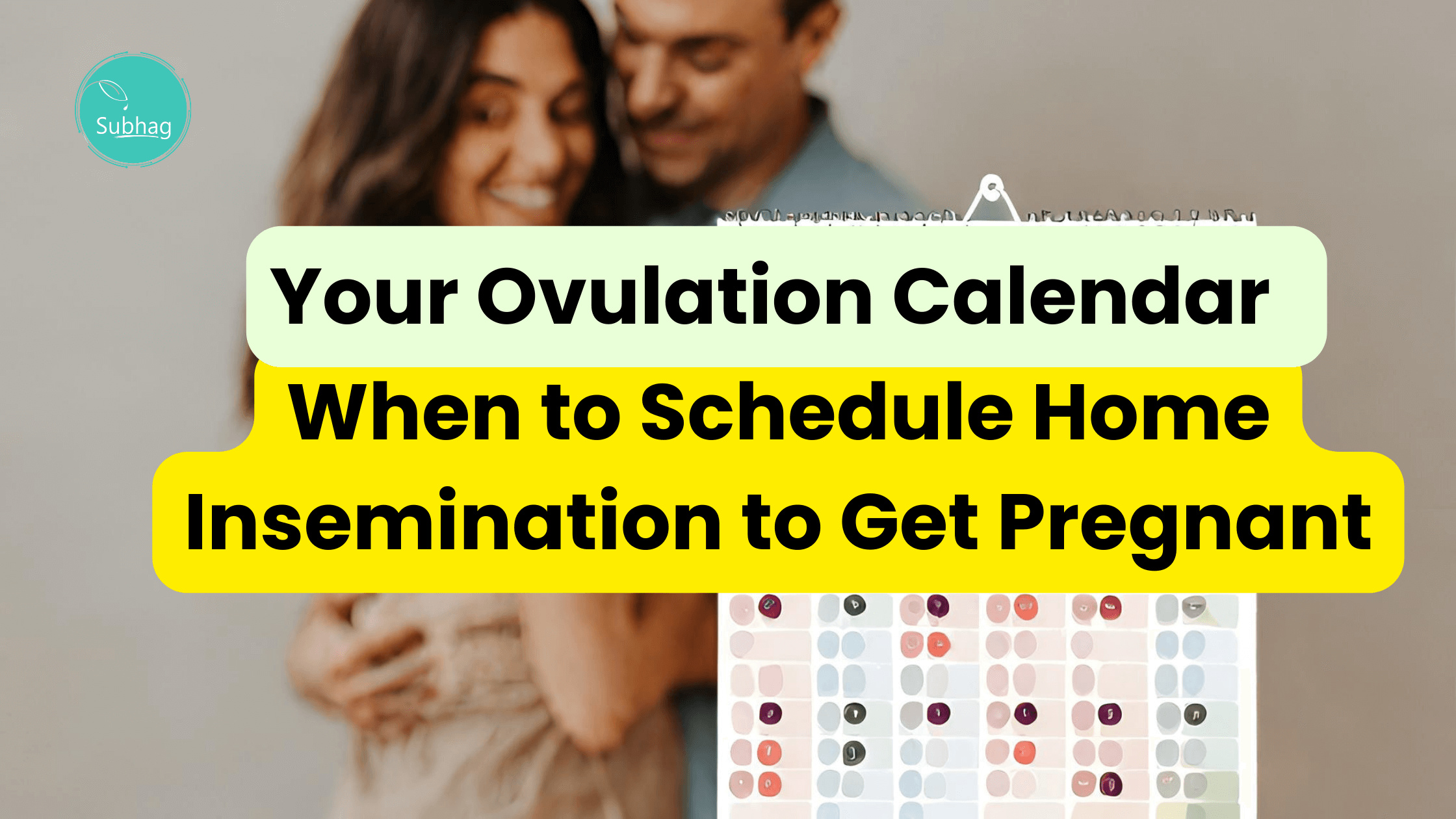If you’re trying to get pregnant, your ovulation calendar is a valuable tool. While there are many ways to help determine the best time to schedule intercourse for pregnancy, this article will focus on how to use an ovulation calendar as well as what information it can give you.
The first step in using an ovulation calendar is learning about fertility awareness and your menstrual cycle. Understanding when you have fertile days and when your body releases an egg each month can be tricky at first but once learned, will become second nature quickly.
As a general rule of thumb: the more regular your periods are, the easier it will be to track them accurately!
The important thing is that you take your temperature every morning before getting out of bed so that any deviations from your normal cycle can be noted.
Fertility awareness is a general term which means tracking a woman’s menstrual cycle and looking for specific signs to predict when she will ovulate.

A primary sign of ovulation is when the body produces a large amount of luteinizing hormone (LH). Increased amounts of LH causes the follicle in the ovary to rupture, releasing an egg into the fallopian tube that may be fertilized by a sperm through sexual intercourse.
This process takes about forty hours so trying to have sex once an egg is released will give you your best chance at conceiving.
There are three different types of fertility awareness: symptom tracking, basal body temperature method and cervical fluid method. You should note which type is right for you by understanding your menstrual cycle.
If you consistently have thirty-five day cycles, using basal body temperature is the best option as it only requires taking your temperature every morning at the same time.
If however, you are all over the place with your cycle length, cervical fluid method would be more suitable because it requires checking yourself daily to see if there are any changes in fluids.
Symptom tracking means that women record their physical symptoms throughout their menstrual cycle and then look for patterns or deviations that occur during ovulation.
Common symptoms of ovulation include: breast tenderness, fatigue, abdominal cramps/pain and an increase in libido. If you’re someone who notices a certain symptom occurring regularly each month at the same time or if two symptoms occur simultaneously (like feeling both tired and having abdominal cramps) then this would be a good method for you.
Basal body temperature uses the fact that your body’s internal temperature lowers slightly during ovulation. By tracking this change, women can predict when they will release an egg each month.
Tracking basal body temperature is also helpful in understanding the length of your menstrual cycle as it provides an accurate measure from day one of menstruation to the day before your next period starts .
The change in basal body temperature happens due to the hormone progesterone which is responsible for maintaining a pregnancy. Progesterone levels increase after ovulation which means that measuring them will help determine the best time to conceive during a menstrual cycle.
Cervical fluid method involves checking your cervical mucus daily to see if you are ovulating. By checking the fluid, women can recognize when it is most fertile and plan sex accordingly.
The advantage of this system is that women don’t have to take their temperature or record symptoms so there’s no guesswork involved!
It’s also helpful in understanding hormonal fluctuations which can lead to infertility but on the other hand, it requires a lot more patience because only a small amount of mucus is released during ovulation while a larger volume happens prior to menstruation .
As you can see from this brief overview, each type of fertility awareness has its own advantages and disadvantages.
However, all of them rely on some factors being true:
1) Women must have a constant cycle length or else it won’t be able to measure ovulation.
2) Temperature must increase after the LH surge which will only happen if there is no pregnancy.
3) There must be appropriate cervical fluid for the test to work. If you’re breastfeeding, pregnant, taking certain medications (including antihistamines), do not use this method!
This method may also fail if women are on hormonal contraceptives which means that checking basal body temperature will be more effective in these cases .
If you want to try fertility awareness but your menstrual charts show mixed results like three thirty-one day cycles and one thirty six day cycle, talk to your doctor who can recommend more specific tests of LH levels during each phase of your cycle or a blood test to measure LH and sperm production. It is important to consult with a health care provider for personalized advice and guidance on fertility awareness and related medical tests.
In general, fertility awareness seems to have higher success rates when there are fewer sexual partners and abstinence from ejaculation is practiced from five days before ovulation starts.
If you’re not already familiar with this method of birth control, don’t worry! I’ll break down the basics for you below:
Basal body temperature (BBT) method: This involves taking your basal body temperature first thing in the morning each day at around the same time.
Your BBT will increase by about half a degree Fahrenheit after ovulation and stay high until menstruation begins . You can start this today without any preparation or testing as long as you’re willing to take your temperature every day at the same time!
However, if you think you’ll have trouble remembering or find it annoying to take your temperature every morning, you can buy a special BBT thermometer that will track your basal body temperatures for you by using memory recall.
Then all you need to do is place the thermometer in your armpit when you wake up and it will record whatever number it reads today and repeat this process until menstruation begins .
What are some of the problems with this method?
1) It requires taking your temperature at the same time each day which means getting out of bed early enough to not rush through it (you want an accurate reading, after all).
2) One study showed that about 50% of women with regular menstrual cycles had at least one day when the temperature was affected by factors other than ovulation so you may need to change your plans on that day or even within a few days after ovulation.
3) It only works if you’re willing to abstain from sex for about five days in a row beginning on the third or fourth day prior to ovulation (when your BBT will be high enough to indicate it’s happening).
Ovulation method: This involves checking your cervical mucus daily and noting when it becomes stretchy, slippery, and clear (similar to an egg white).
Usually this happens approximately one week before menstruation begins but can vary greatly between women. If you want to try this method, check the fluid every day to see if it’s appropriate for testing .
If you’re not familiar with the ovulation method, you may need to do some research about what “stretchy, slippery, clear” cervical mucus looks like or ask your doctor to show you. Also, this method requires abstinence from sex for about two weeks (five days prior to ovulation until menstruation begins) so make sure you and your partner are on the same page for accurate results! Additionally, patients may be able to obtain a sample at home by using a special condom that can collect semen during sex.
However, in this case, the sample must be quickly brought to a medical setting where the semen can be analyzed, which can be a potential problem for some couples.
Sympto-thermal method: This involves three elements; taking BBT, checking cervical fluid , and checking body symptoms of ovulation , all at the same time every day.
The sympto-thermal method is considered one of the most effective types of fertility awareness but can be difficult to maintain because of the multiple factors that must be tracked.
If you’re using this method, make sure to start with the BBT method and then add cervical fluid and body symptoms as well if you have time!
A couple other things worth noting: The above methods only work during a woman’s reproductive years (usually up until menopause).
To better predict fertility during perimenopause , you may need to use a combination of these techniques along with hormone testing or an ultrasound. Lastly, it’s not recommended for women who have irregular menstrual cycles .
What are some pros of using fertility awareness?
1) It can be used in conjunction with barrier methods like condoms , diaphragms, and sponges for extra protection.
2) You can use one method on its own or combine two or more (e.g. taking BBT and checking cervical fluid but not symptoms of ovulation).
3) It’s free! All you need is a thermometer and some patience… however, if you want an electronic version of the BBT method , it will cost around $50 USD .
Also, checking your cervical mucus in addition to using other methods might involve buying pH paper strips or purchasing pre-made tests although this may be cheaper than fertility drugs in the long run.
What are some cons about using fertility awareness?
1) It involves abstaining from sex or using condoms for several days in a row at least five days before ovulation and usually two weeks after this date.
2) While it’s more likely to accurately predict fertility than the rhythm method , the success rates are still roughly 75% (meaning one out of four people using these methods will become pregnant unintentionally).
3) It may be difficult for women with irregular menstrual cycles to use one method on its own unless they also monitor hormone levels or perform ultrasounds.
4) When used alone, it does not protect against sexually transmitted infections .
5) If you’re using fertility awareness as your only birth control method, make sure both you and your partner know how to do three things: take your temperature correctly (always at the same time), identify stretchy, slippery, clear cervical mucus (and vaginal sensation), and understand when you’re most likely to be fertile (both before and after ovulation). Additionally, it is important to consult with a healthcare provider to ensure that you are using fertility awareness correctly and to discuss any potential risks or concerns, especially if you are considering assisted reproductive technology such as in vitro fertilization.
What’s the difference between fertility awareness and the rhythm method?
The main difference is that fertility awareness relies on daily observations of cervical fluid and/or symptoms in addition to checking body temperature whereas with the rhythm method, a woman only tracks her cycle length (plus any intercourse, contraception , etc.) in order to predict fertility.
Both methods involve abstaining from sex or using chemical contraceptives during fertile times but if done correctly, one should be much more effective than the other since they both try to do the same thing.
How is fertility pattern determined?
1) A woman must first know how long her menstrual cycle typically lasts (an average is 28 days) in order to count backwards the length of time she’s most likely to be fertile (usually around 7 days out).
2) To calculate your fertility pattern, subtract 18 from the total number of days in your shortest cycle in the last six months and 11 from your longest.
3) The range you get is when you’re most likely to be fertile during your menstrual cycle; this will fluctuate slightly with each period so take an average if necessary. For example, let’s say a woman has cycles that vary between 30-32 days… subtracting 18 days gives her roughly 14 fertile days every month. However, it is important to note that fertility patterns can be affected by various factors, including possible causes of male infertility. Understanding the cause of infertility is crucial in determining the fertility pattern and finding the best course of action for achieving pregnancy.
4) Once she knows how many fertile days there are each month, using fertility awareness to avoid pregnancy becomes easier (e.g. abstaining from sex or using condoms seven to eleven days before ovulation and two weeks after).
5) To know when you’re least likely to be fertile, subtract 18 from the total number of days in your longest cycle in the last six months and 11 from your shortest. The range you get is when you’re least likely to be fertile, which can be affected by factors such as low sperm count and infertility cases. It is important to keep this in mind when planning a pregnancy!
What do cervical fluid and basal body temperature have in common?
Basal body temperature refers to your lowest core body temperature taken immediately upon waking with a special thermometer and checking cervical fluid just means looking for changes in vaginal secretions throughout the menstrual cycle. Both are ways of figuring out your fertility pattern, just like tracking your menstrual cycle length.
How do I chart my basal body temperature?
1) Take your temperature immediately upon waking (at the same time every day) before doing anything else. (If you have a high fever, wait until it subsides.)
Make sure to use a special thermometer designed for checking this type of temperature by inserting it at least three fourths of an inch into the vagina!
Do not touch any other areas with the thermometer since it will give off false readings.
2) Record this temperature on a graph along with the date .
3) If you notice that your basal body temperature has risen or stayed elevated, this means that ovulation is near – only have sex during these days/weeks!
One to two weeks before ovulation, you’ll notice a slight drop in temperature. After ovulation has occurred, the temperature will rise again and stay elevated until your period begins.
How do I recognize when my cervical fluids change?
1) During your menstrual cycle, pay particular attention to when vaginal secretions start to appear , especially if they’re slippery or stretchy (like egg whites).
Checking these types of cervical fluids is the best way to know when you’re fertile! Once you notice them starting to appear, this means that it’s time to abstain from sex/use protection for 1-2 weeks .
Keep in mind that what might feel wet or slippery at one point in your cycle might not feel the same at another so this is why cervical fluid is so important.
2) To check your recent cervical fluids, simply wipe or spread them on one of your fingers to see if they resemble anything similar to egg whites .
If it’s sticky or pullable, you’re most likely not fertile since this type of vaginal secretion happens once a month after ovulation has occurred.
3) If you notice that there are no more wet sensations or secretions before your period begins , chances are that you didn’t ovulate during that cycle and aren’t currently fertile.
Conclusion paragraph
If you’re trying to get pregnant, an ovulation calendar is a valuable tool. When used correctly, it can help point out the days when your body will release an egg and give you more chances of getting pregnant with each sexual encounter.
So what’s next? Start using this information on your menstrual cycle to better understand how it works and then create an ovulation calendar for yourself that includes all of these details!




